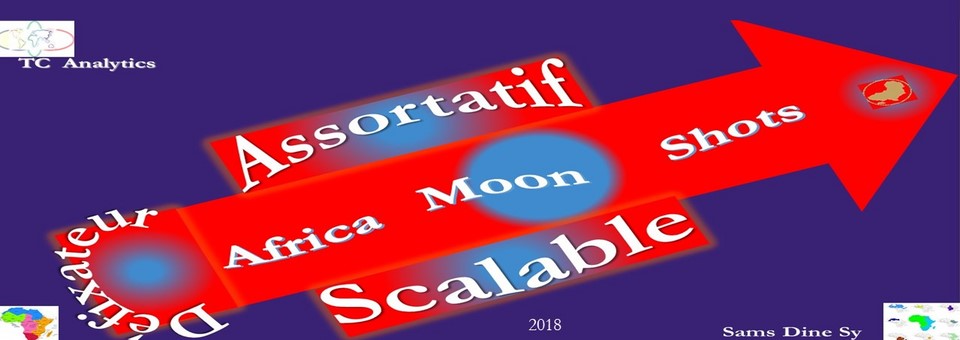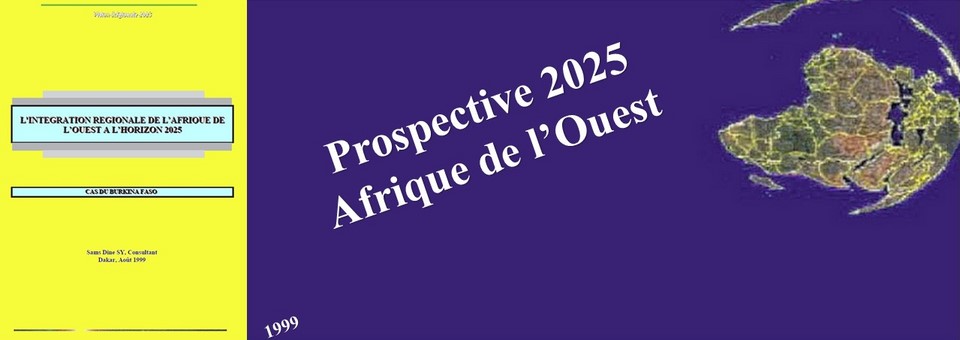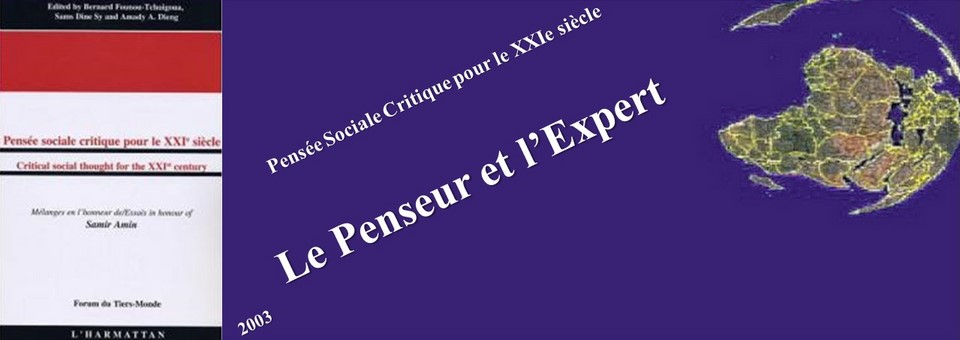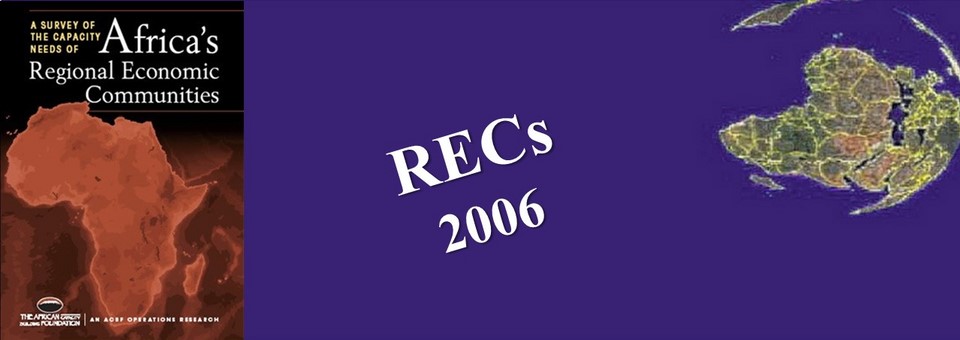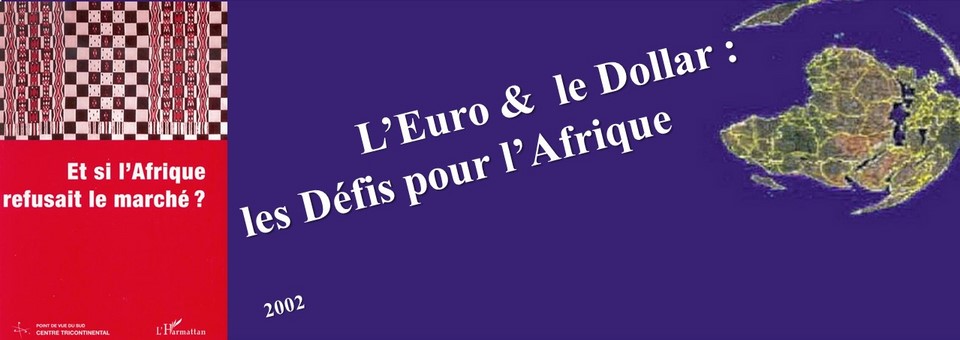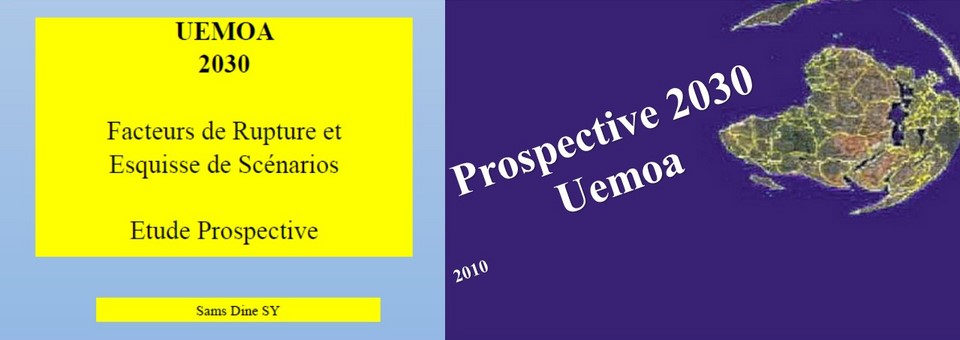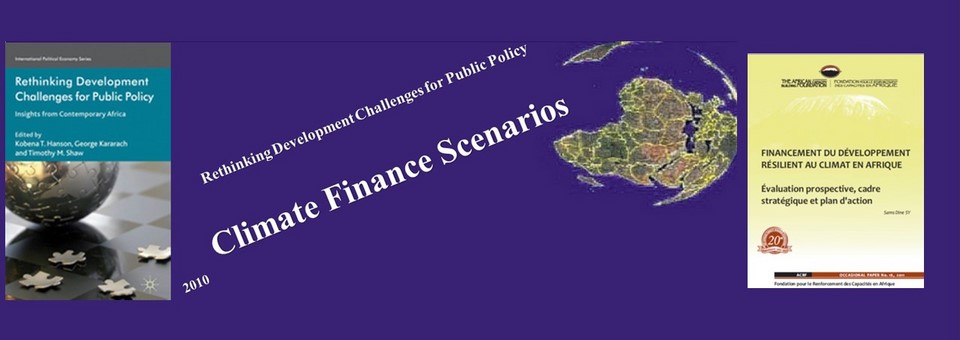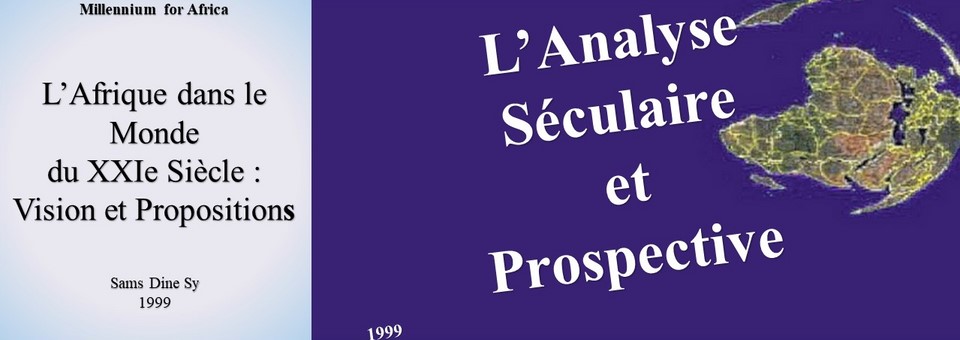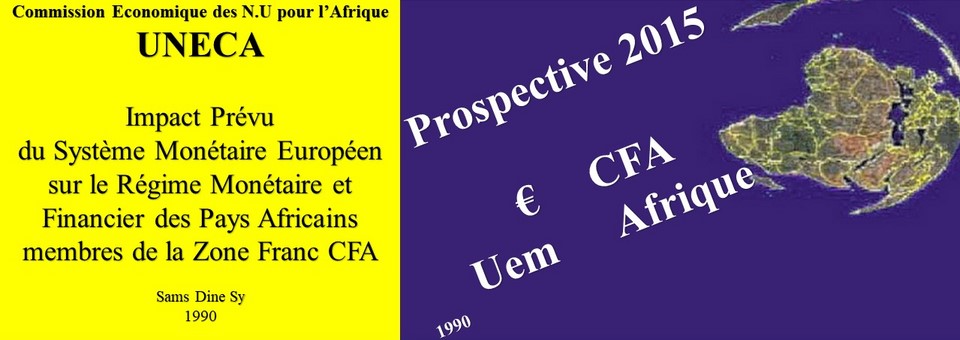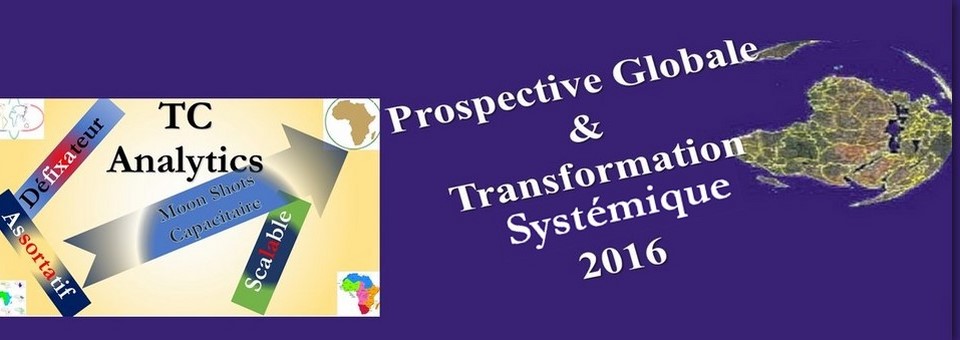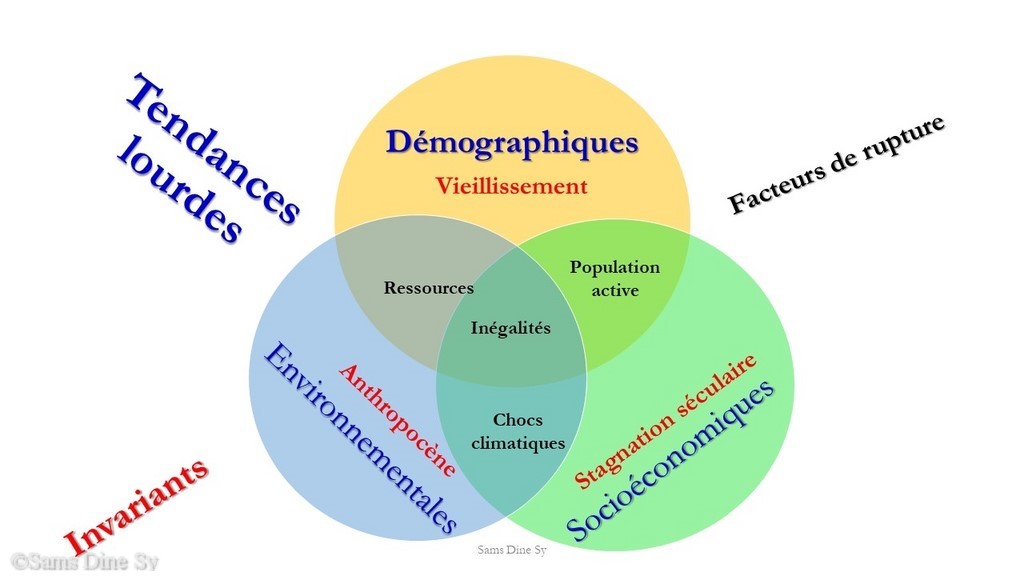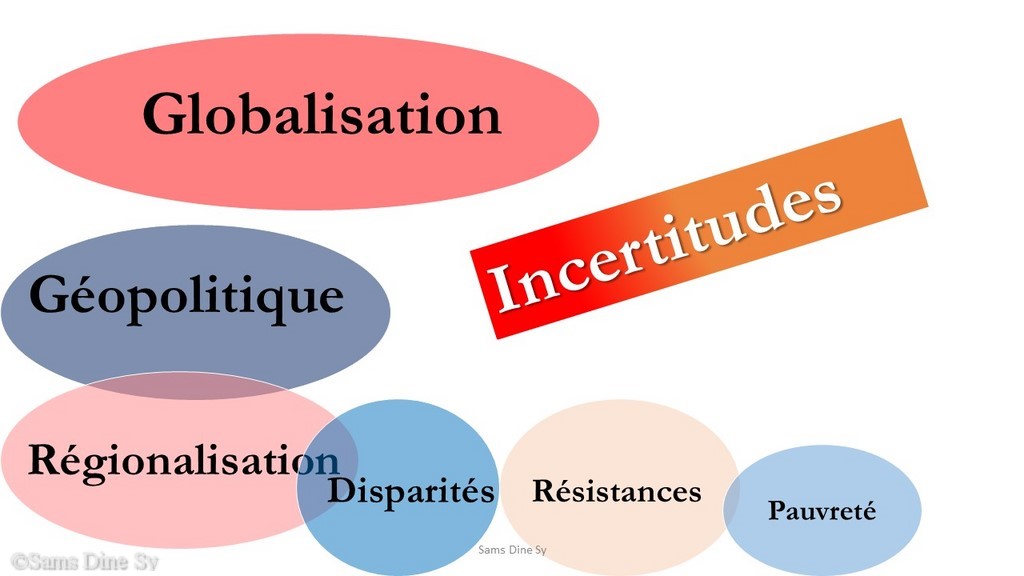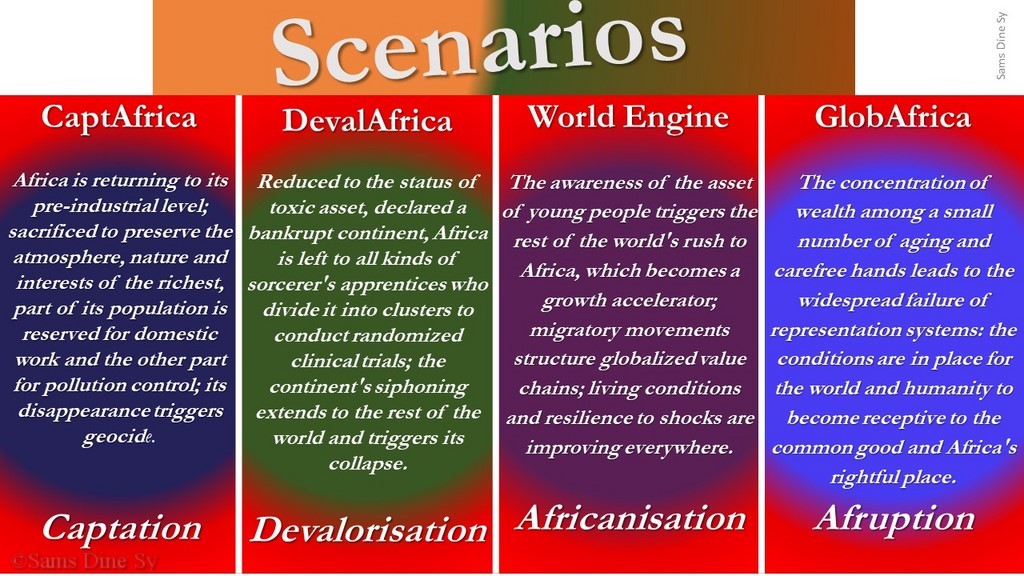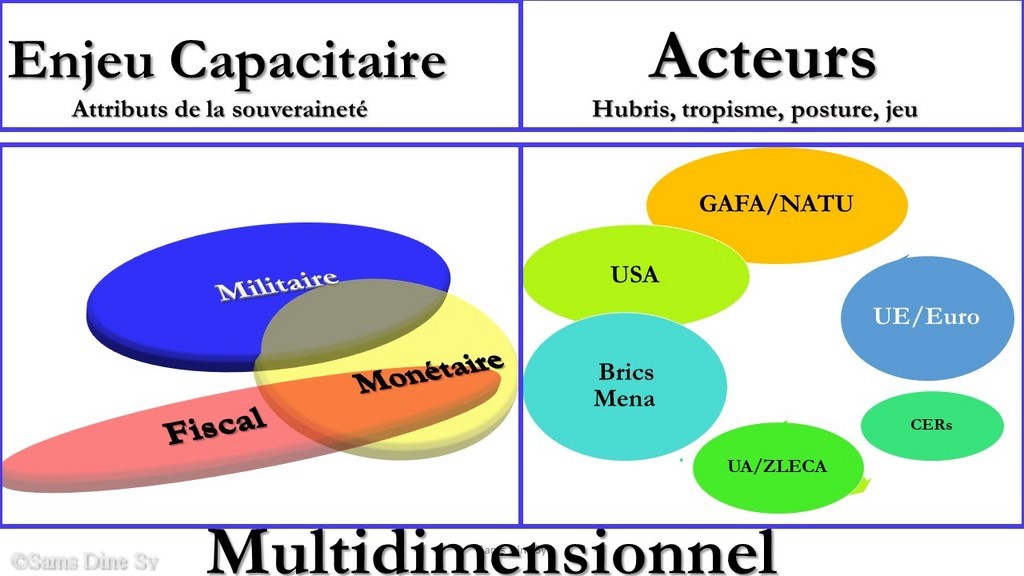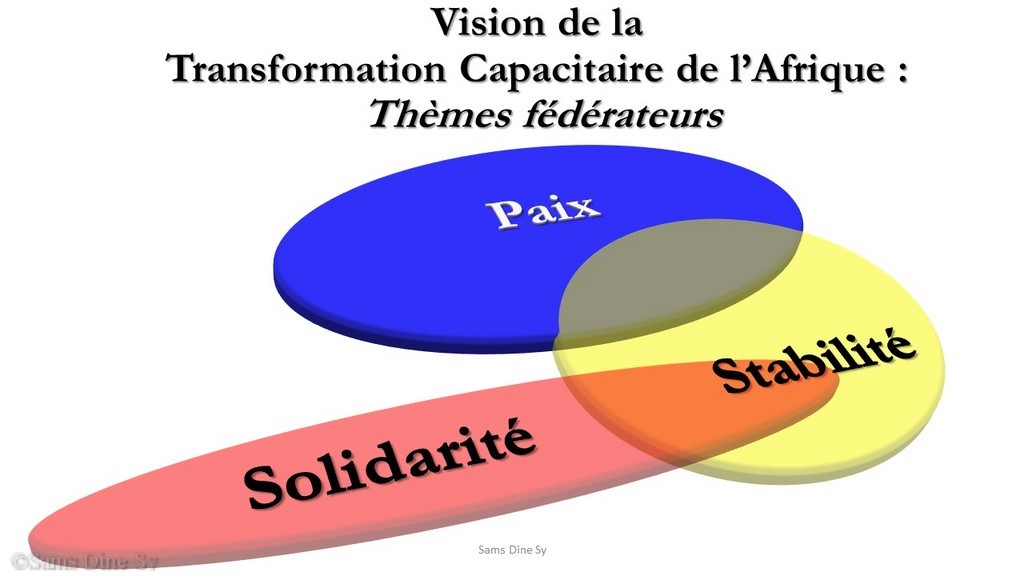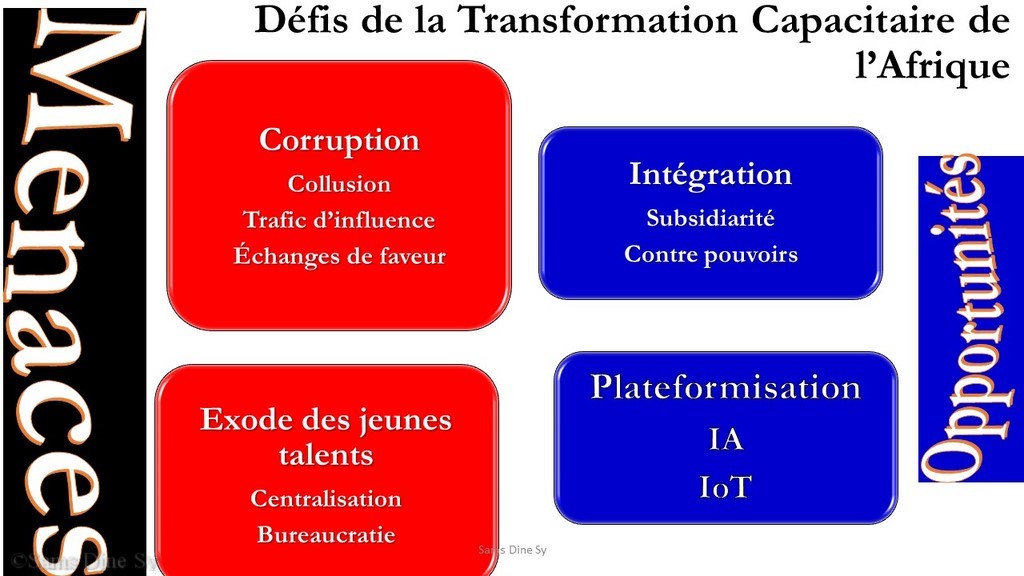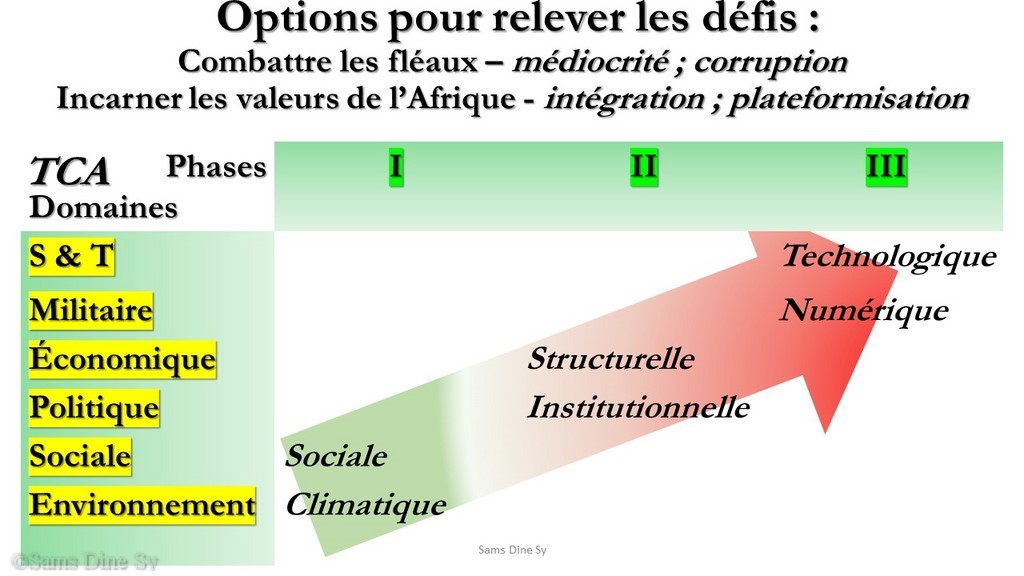Global Foresight "World - Africa"; 2016
Abstract
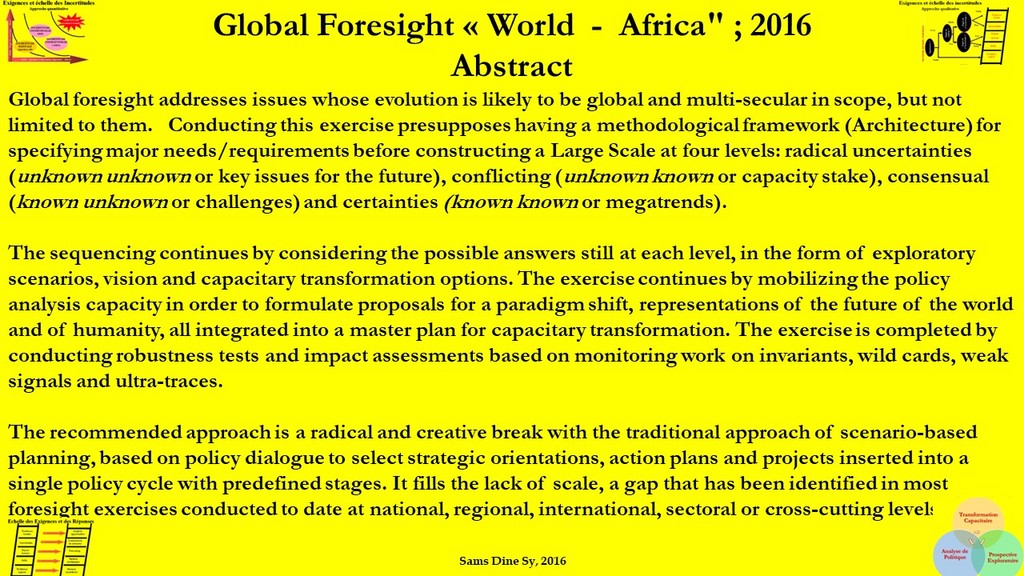
Keywords
Paradigm, Future, World, Humanity, Scale, Megatrends, Uncertainties, Issue, Challenges, Trendometrics, Scenarios, Vision, Option, Capacitarty Transformation, Robustness, Impact, Invariant, Wild Cards, Signals, Traces
Paradigm, Future, World, Humanity, Scale, Megatrends, Uncertainties, Issue, Challenges, Trendometrics, Scenarios, Vision, Option, Capacitarty Transformation, Robustness, Impact, Invariant, Wild Cards, Signals, Traces
OVERWIEV
Global Foresight is a method for exploring the next world, building a shared vision and modeling its transformations. It is part of - but not limited to - the multi-spatial and multi-temporal approach to better integrate public decisions, and it describes the path from upstream to downstream by relying on transformative political will or volitive dynamics.
Gaston Berger is to be credited with having stimulated the volitive dynamic from the 60's by anchoring in it the foresight of which he is the inventor. Since then, it has essentially come down to the construction of normative scenarios following the example of the approaches developed in the US (Rand, H. Kahn, D. Bell). However, like economics, this approach has been discredited since the Great Recession (2007-2012). It is currently being recast, thanks to the exercises carried out in the framework of the assessment of the socio-economic impacts of climate change (IPCC), demographic trends and technological innovation waves.
The large-scale architecture - linking global and multi-secular demands/uncertainties and responses - places global foresight at the heart of volitive dynamics, a new frontier of research on policy analysis, this discipline devoted to state intervention, whatever the level (national, international...) and the decision-making model (requisition, delegation...).
With constructivism as an epistemological foundation, the volitive dynamics becomes a new frontier of research, pushes back the limits of positivist and normative approaches which tend to reduce public action to a confrontation of interest groups with private agendas. Like the normative approach, it relies on prescriptive methods while linking them to a prospective approach which can be qualified as preventive/normative or exploratory/global depending on whether it is based more on quantitative or qualitative data.
The connections and interactions between global foresight and policy analysis are complex. Considered by post-positivists as the first phase of the policy process (B. Hogwood; L. Gun), this approach goes well beyond the framework of the discipline and tends to become autonomous even if it is included in more general frameworks such as social change theory, complex systems dynamics (L. Bertalanffy, J. Forrester) or systemic transformation.
The recommended approach is a radical and creative break with the traditional approach of scenario- planning, based on policy dialogue around a multilateral or global agenda to select strategic orientations, action plans and projects inserted in a single policy cycle, according to “The Stages Heuristic". This traditional approach should be abandoned because it exposes the public regulator to capture by private agenda interest groups through network, coalition or collusion strategies.
The rupture first concerns the choice of the unit of analysis, which radically departs from the traditional Westphalian state to focus on the post-Westphalian federal state. From radical, it becomes creative to renew policy analysis as an experimental science. This renewal, however, involves penetrating the labyrinth of its currents and theories and toolboxes, drawing up their genealogy, their deployment in terms of circulation and reception within continents and states.
By way of illustration, the topic selected focuses on the World and Africa through a series of research and studies of their future evolution: the most structuring demographic, socio-economic and environmental issues, extreme risks and the capacities to deal with them.
The Global Foresight exercise begins by specifying the major needs/requirements and the decisive factors/variables or unknown unknown that structure them, with a view to constructing a double scale at four levels: radical uncertainties (key issues for the future), conflicting or unknown known (capacity issues), consensual (challenges or known unknown and certainties or megatrends or known known.
Gaston Berger is to be credited with having stimulated the volitive dynamic from the 60's by anchoring in it the foresight of which he is the inventor. Since then, it has essentially come down to the construction of normative scenarios following the example of the approaches developed in the US (Rand, H. Kahn, D. Bell). However, like economics, this approach has been discredited since the Great Recession (2007-2012). It is currently being recast, thanks to the exercises carried out in the framework of the assessment of the socio-economic impacts of climate change (IPCC), demographic trends and technological innovation waves.
The large-scale architecture - linking global and multi-secular demands/uncertainties and responses - places global foresight at the heart of volitive dynamics, a new frontier of research on policy analysis, this discipline devoted to state intervention, whatever the level (national, international...) and the decision-making model (requisition, delegation...).
With constructivism as an epistemological foundation, the volitive dynamics becomes a new frontier of research, pushes back the limits of positivist and normative approaches which tend to reduce public action to a confrontation of interest groups with private agendas. Like the normative approach, it relies on prescriptive methods while linking them to a prospective approach which can be qualified as preventive/normative or exploratory/global depending on whether it is based more on quantitative or qualitative data.
The connections and interactions between global foresight and policy analysis are complex. Considered by post-positivists as the first phase of the policy process (B. Hogwood; L. Gun), this approach goes well beyond the framework of the discipline and tends to become autonomous even if it is included in more general frameworks such as social change theory, complex systems dynamics (L. Bertalanffy, J. Forrester) or systemic transformation.
The recommended approach is a radical and creative break with the traditional approach of scenario- planning, based on policy dialogue around a multilateral or global agenda to select strategic orientations, action plans and projects inserted in a single policy cycle, according to “The Stages Heuristic". This traditional approach should be abandoned because it exposes the public regulator to capture by private agenda interest groups through network, coalition or collusion strategies.
The rupture first concerns the choice of the unit of analysis, which radically departs from the traditional Westphalian state to focus on the post-Westphalian federal state. From radical, it becomes creative to renew policy analysis as an experimental science. This renewal, however, involves penetrating the labyrinth of its currents and theories and toolboxes, drawing up their genealogy, their deployment in terms of circulation and reception within continents and states.
By way of illustration, the topic selected focuses on the World and Africa through a series of research and studies of their future evolution: the most structuring demographic, socio-economic and environmental issues, extreme risks and the capacities to deal with them.
The Global Foresight exercise begins by specifying the major needs/requirements and the decisive factors/variables or unknown unknown that structure them, with a view to constructing a double scale at four levels: radical uncertainties (key issues for the future), conflicting or unknown known (capacity issues), consensual (challenges or known unknown and certainties or megatrends or known known.
The sequencing continues by considering possible responses, again at each level, in the form of exploratory scenarios, vision and capacitary transformation options.
The exercise addresses the Major Requirements by separating the certainties from the uncertainties to obtain four levels of analysis:
- Megatrends or certainties.
- Radical Uncertainties or Key Issues;
- Conflicting Issues-Actors or Uncertainties.
- Challenges-Threats and Opportunities or Consensus Uncertainties.
This sequencing makes it possible to consider the Possible Responses at the four previous levels:
- Trendometrics or mega-trends data analysis;
- Scenarios/crafting & story telling;
- Vision/Visioning;
- Strategic options/profiles.
The conduct of this exercise is based on the collection and analysis of a considerable amount of data on global trends from a multi-secular perspective. Hence the need for it to be carried out through delegation to groups of experts and the management of sufficiently independent and plural opinions. Demographic, socio-economic and environmental problems and, in general, all resources, renewable or non-renewable, are directly concerned here.
- Megatrends or certainties.
- Radical Uncertainties or Key Issues;
- Conflicting Issues-Actors or Uncertainties.
- Challenges-Threats and Opportunities or Consensus Uncertainties.
This sequencing makes it possible to consider the Possible Responses at the four previous levels:
- Trendometrics or mega-trends data analysis;
- Scenarios/crafting & story telling;
- Vision/Visioning;
- Strategic options/profiles.
The conduct of this exercise is based on the collection and analysis of a considerable amount of data on global trends from a multi-secular perspective. Hence the need for it to be carried out through delegation to groups of experts and the management of sufficiently independent and plural opinions. Demographic, socio-economic and environmental problems and, in general, all resources, renewable or non-renewable, are directly concerned here.
The exercise mobilizes policy analysis capacity to formulate proposals for paradigm shifts, representations of the future of the world and humanity, all integrated into a master plan for capacitary transformation.
The exercise is completed by conducting robustness tests and impact assessments based on monitoring work on invariants, wild cards, weak signals and ultra-traces.
The preparation and design of the resulting Master Plan is part of a method that propels Africa to the global frontier of volitive dynamics within the tripolar helocïdal diagram combining Volitive Policy Analysis (VPA), Global Foresight (GF) and Capacitary Transformation (CT). It is at this frontier that the vision of a world at peace, a stable Africa and a united humanity is embodied in the long term and that the contours of the Defixator, Scalable and Assortative Post Westphalian Federal State are drawn.
In practice this translates into the concept of Moon Shots Africa and case studies drawn from current events (Covid Analytics) and focused on the challenges (TC Analytics) such as regional integration (Federal Eco-System 2.0), corruption, mediocrity, platformization.
The exercise is completed by conducting robustness tests and impact assessments based on monitoring work on invariants, wild cards, weak signals and ultra-traces.
The preparation and design of the resulting Master Plan is part of a method that propels Africa to the global frontier of volitive dynamics within the tripolar helocïdal diagram combining Volitive Policy Analysis (VPA), Global Foresight (GF) and Capacitary Transformation (CT). It is at this frontier that the vision of a world at peace, a stable Africa and a united humanity is embodied in the long term and that the contours of the Defixator, Scalable and Assortative Post Westphalian Federal State are drawn.
In practice this translates into the concept of Moon Shots Africa and case studies drawn from current events (Covid Analytics) and focused on the challenges (TC Analytics) such as regional integration (Federal Eco-System 2.0), corruption, mediocrity, platformization.
Several foresight, policy analysis and economic evaluation exercises that contributed to this synthesis are available on this plateform.
updated: Nov 2020
Latests
Quantum crypto: why do they all abdicate? BRICS, USA, G20, UN 2.0
09.08/23
31/03/23
It is not Wagner who wants!
10/07/21
09/28/2021
20/09/2021
09/15/2021
05/05/2021
07/06/2021
ECO & financial guarantor
06/06/2020
Covid Analytics for Dummies
12/05/2020
Federal Eco-System 2.0 : Disruptive01/2020
Global Foresight : Overview
"World - Africa"
An overview of the Global Foresight exercice output
Foresight methodology
Overview
Mega trends
MEGA TRENDS
Demographic Environmental Socioeconouic
INVARIANTS
Aging Anthropocene Secular Stagnation
WILD CARDS
Workforce resources Climate shocks Inequalities
WEAK SIGNALS
Méga Trends : Key Metrics
Demographic Environmental Socio-economic
60 years + Human forcing GDP Growth
% W/m² %
2015 before 1750 before 1820
12
Vieillessement depuis 20150
Antrhopocène avant 17500
Stagnation avant 18502050 Since 2011 Since 1820
21
Vieillessement vers 20502
Antrhopocène depuis 20114
Stagnation depuis 1820Sams Dine Sy
A retired facilitator and expert group management specialist, the publisher of the samsdinesy.org - open science platform dedicated to foresight and policy analysis - declares that it is not affiliated with any interest group, advises or receives funds from any organization that can benefit
